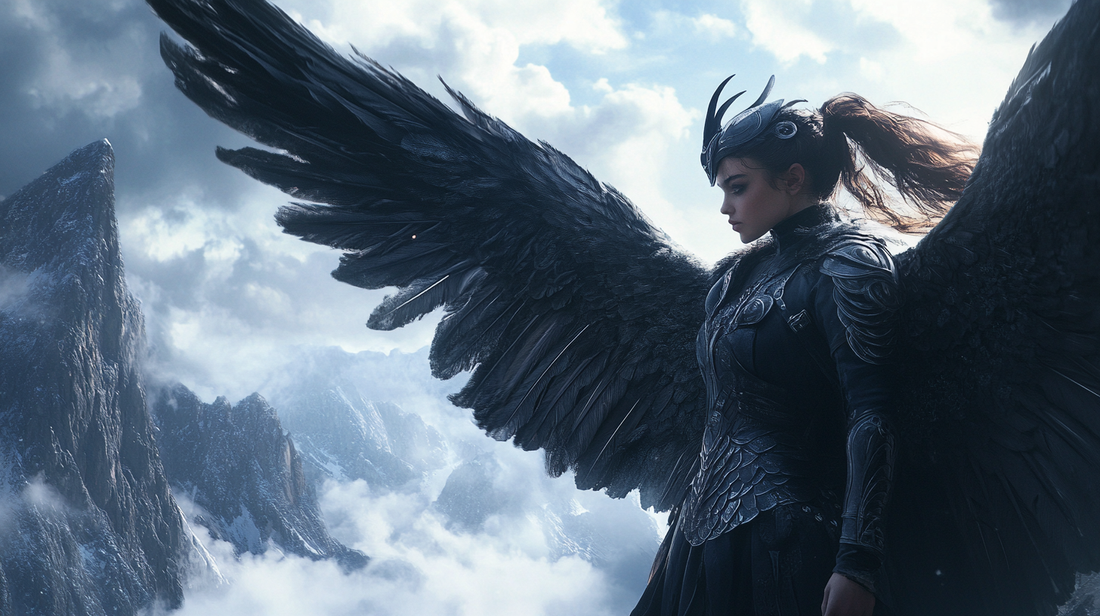
The Valkyries – Warriors of Nordic Mythology
Split
The Valkyries – Warriors of Nordic Mythology
Nordic mythology is one of the most fascinating and complex mythological worlds in human history. Among the numerous gods, heroes and creatures, the Valkyries stand out as particularly interesting figures. They are not only a symbol of the connection between death and fate, but also of female power and mystical wisdom. In this blog we take a detailed look at the Valkyries, their role in Nordic mythology and their influence on art, literature and pop culture.
Who are the Valkyries?
In Norse mythology, Valkyries (Old Norse "valkyrjar", meaning "choosers of the fallen") are heavenly beings sent by Odin, the Allfather. Their main task is to select the bravest warriors who have fallen in battle on the battlefields and bring them to Valhalla. Valhalla, also known as Valhalla, is Odin's magnificent hall where the fallen heroes (Einherjer) train to fight alongside the gods in the end-time battle of Ragnarök.
The Valkyries are often described as beautiful but fearsome maidens who ride on flying horses and are armed with shields, helmets and spears. However, their appearance is not only warlike: they are also weavers of fate who control the lives and deaths of people. In some depictions they wear white dresses and can appear in the form of swans.
The Role of the Valkyries in Norse Mythology
The Valkyries are closely linked to the concepts of honor, bravery, and death. Only the most worthy warriors are chosen by them to be taken to Valhalla, while others end up in Hel, the underworld. This selection reflects not only the Norsemen's respect for martial courage, but also their belief in an afterlife determined by the decisions of the gods and their handmaidens.
Some Valkyries also play a central role in the stories of the Edda, the main sources of Nordic mythology. Particularly well-known is the Valkyrie Brynhild, who appears in the Völsunga saga and the Poetic Edda. Her tragic love story with Sigurd (Siegfried) inspired many later works of literature and music, including Richard Wagner's opera cycle "The Ring of the Nibelung".
Valkyries in Art and Pop Culture
The fascination with the Valkyries extends far beyond Nordic mythology. They became popular motifs in literature, painting and music, especially during the Romantic period. Richard Wagner's opera "Die Walküre", part of his Ring of the Nibelungs, is a masterpiece that combines mythological themes with powerful musical imagery. The famous "Ride of the Valkyries" melody is one of the most well-known works of classical music and is frequently quoted in films and other media.
The Valkyries are also present in modern pop culture. They appear in fantasy novels, video games such as "God of War" or "Assassin's Creed Valhalla" and in films such as Marvel's "Thor: Ragnarok". They often embody a mixture of strong femininity, mystical aura and warrior courage.
symbolism of the Valkyries
The Valkyries symbolize many different concepts:
-
Martial Valor : They honor the brave and strong, making them a symbol of fighting spirit.
-
Fate and Predestination : Their role as choosers of the fallen shows the inescapable power of fate.
-
Female power : As confident, strong and independent figures, they are an early example of female sovereignty in a patriarchal society.
Conclusion
The Valkyries are more than just figures from ancient mythology. They are archetypes that are deeply rooted in the human imagination. Their stories reflect the values and beliefs of the Nordic peoples and continue to inspire artists and storytellers around the world. Whether as goddesses of the battlefield, weavers of fate or icons of pop culture - the Valkyries remain a symbol of the connection between death, fate and indomitable power.




